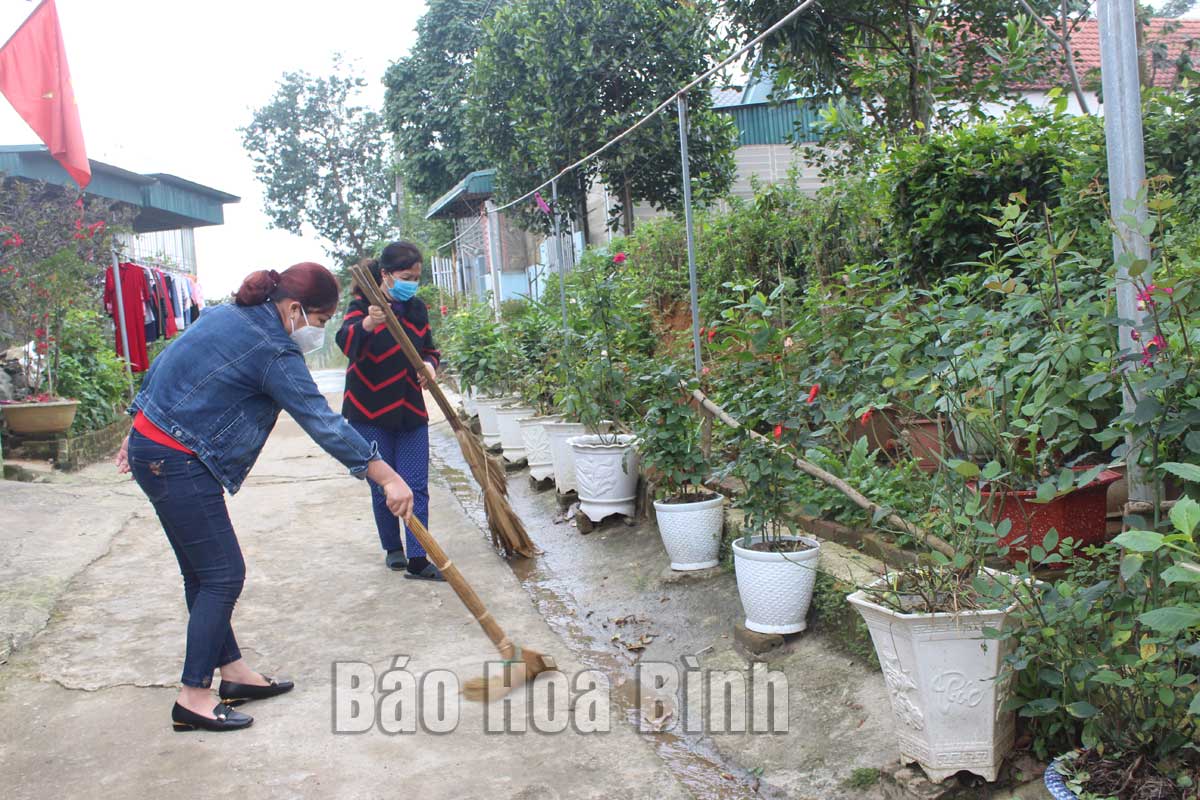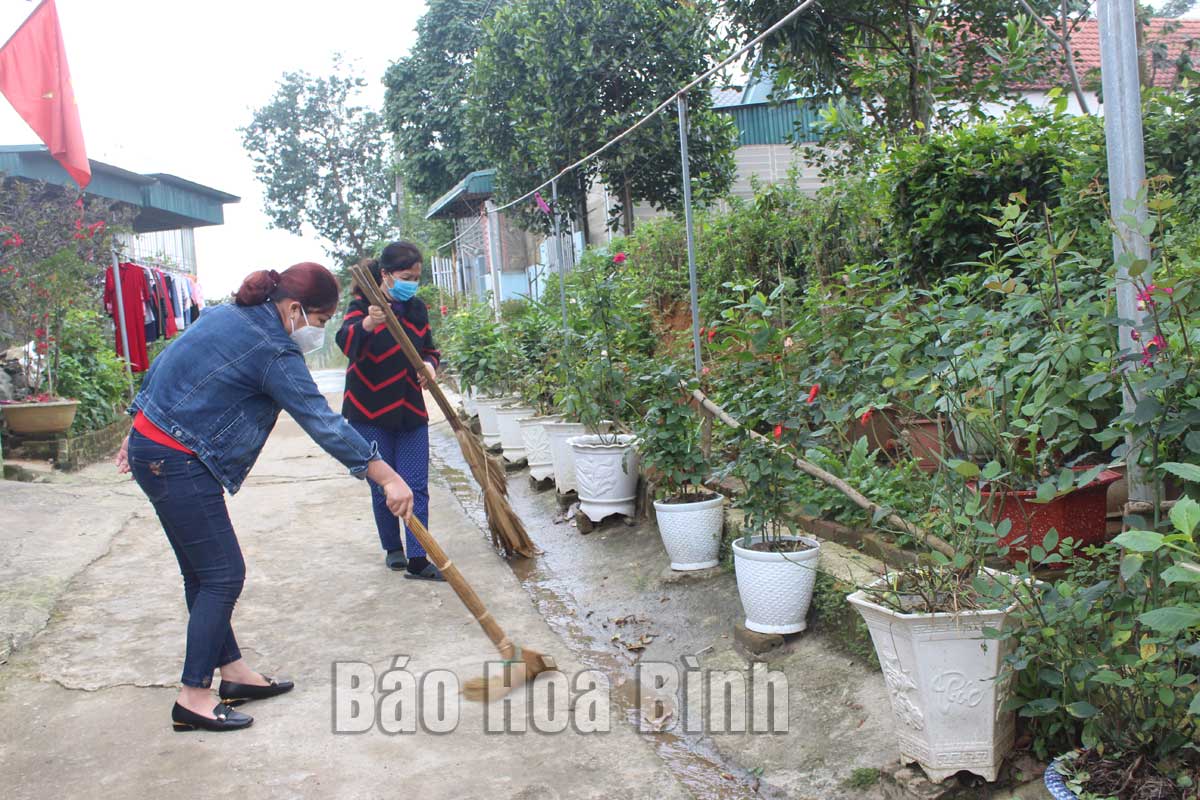
(HBO) – Tan Giang street has a beautiful flower road thanks to the effort of local women who spend time cleaning the street and taking care of flowers at the end of the day or at the weekends.
The sidewalks are narrow and there is no land, so they grow flowers and trees
in pots. The flower roads managed by women have contributed to creating a
beautiful landscape and civilised urban area for Vu Ban town.
Women in Tan
Giang street, Lac Son district’s Vu Ban town maintain the self-governance model
to have green, clean and beautiful roads.
In Vu Ban town, many effective self-governed models have been built and
maintained such as "clean house, beautiful garden, civilised alley"
of the Veterans Association with the involvement of 95 percent of its members;
a section of a self-governed road with a total length of 8.5km;
"contributing capital to help each other develop the household
economy" in nine hamlets and residential groups in the township, said Pham
Thi Chung, Vice President of Vu Ban Town’s Fatherland Front.
Self-governing models of urban civilisation building,
environmental protection and ensuring security and order have made an important
contribution to socio-economic development, maintaining security and defence in
the locality.
Localities, associations and mass organisations regularly review the operation
of self-governed groups in the residential community, selecting effective ones
for replication.
The province now has 7,503 self-governed groups in all villages, hamlets,
residential groups and residential areas, drawing the participation of over 80
percent of households They include 679 groups in the economic field, 2,003 in
the socio-culture, 3,756 in the field of security and order, 910 in the field
of environment and 155 in other fields.
Given the complicated developments of the COVID-19 pandemic, 3,871 COVID-19
community groups have been established in the province over the past two years.
With the motto "going from house to house, checking every suspected person",
these teams have contributed significantly to tracing contacts, managing
quarantined cases at home and spread of the pandemic at a time when the
vaccination rate was still low.
In fact, self-governed groups havewell promoted their role as the core
factor to mobilise strength from the entire population, promote the creativity
and self-governance spirit among local residents, contributing to the effective
implementation of the campaign "All people unite to build new-style rural
building and civilised city"./.
Hoa Binh province is undergoing a dynamic transformation amid Vietnam’s national digital transition. Building on Poliburo’s Resolution No. 57-NQ/TW on breakthroughs in science, technology, innovation, and national digital transformation, the province has rolled out a wide range of practical action plans. A standout initiative is the "Digital Literacy for All” movement, an effort to ensure that no one is left behind in the digital era.
Hoa Binh province is undergoing a dynamic transformation in the wake of the national digital transformation movement. Building on Resolution No. 57-NQ/TW of the Politburo on breakthroughs in science, technology, innovation, and national digital transformation, the province has implemented a wide range of practical action plans. A standout initiative is the "Digital Literacy for All” movement ambitious effort to ensure that no one is left behind in the digital age.
With a spirit of unity and proactive problem-solving, the Party Committee, the government and the people of Dong Lai Commune (Tan Lac District) have made great strides in implementing the resolutions of the 24th Party Congress of the commune for the 2020 - 2025 term. Focusing on leadership and practical actions, the commune has brought the Party’s resolutions into daily life, creating strong impacts and pushing the local development forward.
Amid the nationwide push for digital transformation, young people in Hoa Binh Province are stepping up as dynamic pioneers, applying technology to enhance Youth Union operations and expand the reach of youth-led initiatives. Through creativity and adaptability, Youth Union organizations at all levels have introduced a series of practical solutions, contributing to modern governance and community development.
In recent years, An Nghia commune, located in Lac Son district, has stepped up administrative reform, focusing on improving the quality and efficiency of its single-window service unit for receiving and processing administrative procedures. These improvements have helped create favourable conditions for local residents and organisations to handle administrative procedures, contributing to the commune’s broader socio-economic development.
The Prime Minister-approved master plan to develop the multi-use value of forests ecosystems through 2030, with a vision to 2050, aims to improve the management and sustainable use of forest resources, create jobs, increase incomes, and improve the living standards of ethnic minorities, people in mountainous and remote areas, forest workers and those living near forests.



